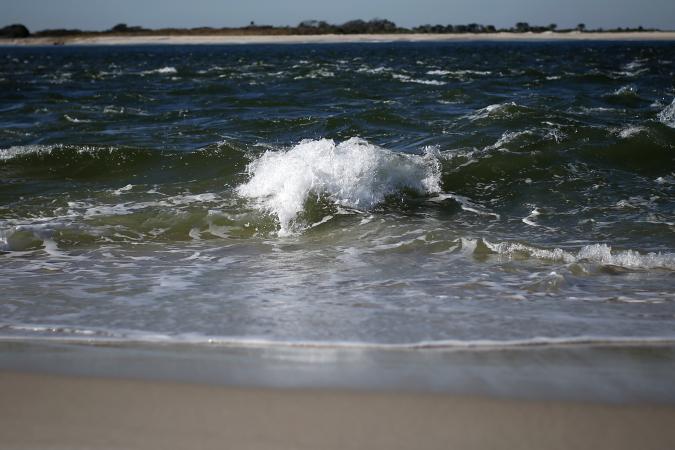Experts say someone could survive the conditions Konrad, 38, encountered, including the 70-degree water temperature; it has happened before in even more extreme conditions. But Konrad’s only hope depended on virtually everything going his way. And almost everything did.
“When people survive … they have to win the lottery,” said Stephen Munatones, founder of the World Open Water Swimming Association and a coach of nine U.S. national open water swim teams.
“It’s remarkable, but it’s also explainable,” said Mike Tipton, a professor of human and applied physiology in extreme environments at Britain’s University of Portsmouth. “If I was going to design somebody to be able to swim in cold water, I would get somebody who is big, [with] lots of muscle [and] lots of subcutaneous fat.”
In short, a retired professional fullback is “the right size, the right shape” and “he was in reasonable water temperature.”
Konrad’s story is so incredible that it has provoked at least one expression of disbelief. This Newsweek post is openly skeptical. The Florida Wildlife Commission is investigating. If it corroborates Konrad’s account, there are lessons here for us all.
It’s pretty easy to imagine some aspects of Konrad’s predicament when, as he tells it, a wave hit his 36-foot vessel as he was tending to a fishing line about 12:30 p.m. and threw him overboard. He had no life preserver, no water, no food, no way to keep warm and nothing with which to signal rescuers. His boat, which was on autopilot, headed off toward Grand Bahama Island. (It was later found on “Deadman’s Reef.” Not making that up.)
But he also faced less apparent challenges. For example, going in the right direction is difficult even for experienced open water swimmers. “Nobody in the world swims straight,” Munatones said. “That’s why there are black lines on the bottom of the pool.” Konrad may have been able to get his bearings from buildings on shore, if he could see them, he said. And once the sun set, onshore lights would have helped guide him in.
Then there’s the initial shock to the heart and uncontrolled breathing that results from plunging unprepared into cold water. “Sixty percent of those who die in [water] below 15 degrees [59 degrees Fahrenheit] die in the first minutes of immersion,” Tipton said. But at 70 degrees, it was easier for Konrad to avoid that.
Conventional wisdom is that someone in Konrad’s predicament should stay in one place, rather than try to swim, if the water is colder than 25 degrees Celsius [77 degrees Fahrenheit], to preserve core heat and ward off hypothermia, Tipton said. But a big, fit person with both muscle and a good layer of subcutaneous fat was probably better off going for it, he said. Ideally, he would use a slow stroke that generated some heat but not too much. (Konrad said he alternated between the breaststroke and the backstroke). A swimmer’s chance of survival in 70-degree Fahrenheit-water for eight to 10 hours is about 50 percent.
“There’s a balance between heat generated and heat lost,” added Mark Harper, who studies survival in extreme situations with Tipton. “Using your muscles does generate heat; however, using your muscles also sends much more heat [away] from the [vital body] systems.”
Dehydration and lack of food would be survivable for 16 hours, Tipton said, though normally people trying to swim the English Channel take in fluids about every half hour, Munatones said. Salt in the water would have burned his eyes, mouth and nasal passages. Favorable seas were essential. “There’s no way an untrained person could swim for that long,” Munatones said.
And then there is the psychology of survival. Interviews with survivors show they maintain the conviction that they’re going to make it and avoid “learned helplessness” that can overwhelm someone clearly facing death, Tipton said. Many, he said, conjure mental images of their children —not their spouses or any other family. “They’re swimming as if they’re going to rescue their kids,” he said. “It’s a remarkably powerful motivator.”
Konrad nailed that one, too. He spent time thinking about his 8- and 10-year-old daughters and resolved to get home alive, he said at a news conference Monday. “After some time I just said, ‘Look, I’m not dying tonight, I’m going to make it to shore,’ ” he said. “It certainly tests your mind when you’re in the water that long.”

